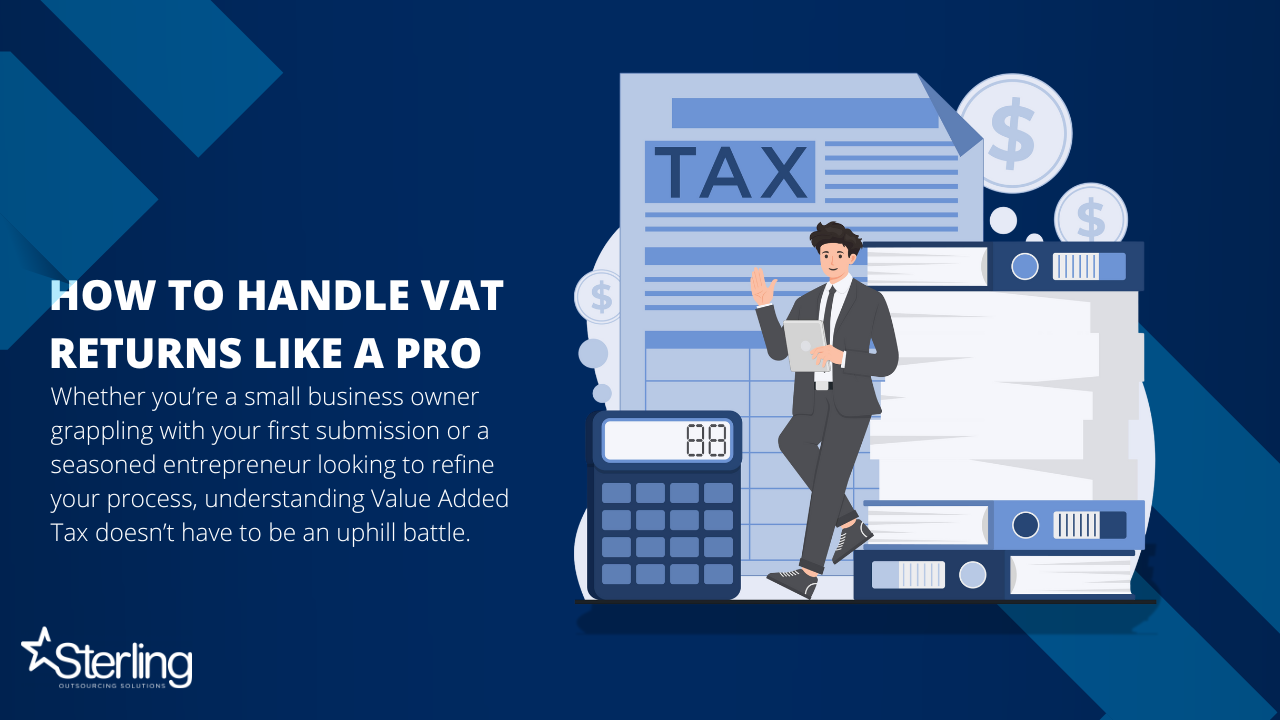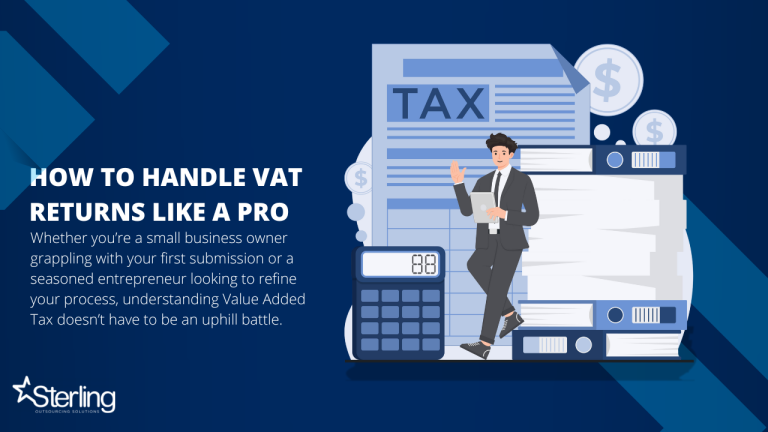Understanding the Basics of VAT
Value Added Tax, or VAT is a consumption tax applied to the sale of goods and services. It’s crucial for businesses operating in many countries.
At its core, VAT is charged at each stage of production or distribution. When you buy a product, part of the price goes towards this Tax. The rate can vary depending on the jurisdiction and type of goods sold.
Businesses collect VAT from customers and remit it to HMRC (Her Majesty’s Revenue and Customs) if they’re based in the UK. This creates a flow where consumers pay while companies handle compliance.
Understanding how VAT works is vital for accurate accounting. It affects pricing strategies and cash flow management as well. Knowing when to submit your VAT return helps avoid penalties, too.
Effective tracking ensures that you stay compliant with regulations while maximising potential refunds when applicable.
Types of VAT Returns and Deadlines
When navigating VAT returns, understanding the different types is essential. Each type serves a unique purpose and comes with specific deadlines that can vary based on your business structure.
The most common type is the standard VAT return, typically submitted quarterly or annually. This applies to most businesses registered for VAT in the UK. However, flat rate scheme users have distinct requirements that simplify calculations but still require timely submissions.
Additionally, some businesses may need to file supplementary returns if they operate across multiple jurisdictions or deal with imports and exports. These situations often come with their timelines.
Missing submission dates can lead to penalties from HMRC, underscoring the importance of staying organised and aware of your obligations. Keeping a calendar specifically for these deadlines helps ensure compliance and smooth operations.
Common Mistakes to Avoid in VAT Return Filing
Filing VAT returns can be tricky. Many businesses stumble over simple yet costly mistakes that can lead to penalties or delayed refunds.
One common error is incorrect data entry. A single number off in your reports can skew the entire return. Always double-check figures against your records before submission.
Missing deadlines is another pitfall. Mark these dates on your calendar and set reminders well in advance to ensure you never miss a deadline for submitting your HMRC VAT return.
Additionally, many people fail to keep proper documentation. In the case of an audit, having organised invoices and receipts makes the process smoother and more reliable.
Lastly, neglecting to claim back allowable expenses leads to lost revenue opportunities. Familiarise yourself with what qualifies as deductible under VAT rules so you don’t leave money on the table.
Tips for Accurate and Timely Submission
To ensure accurate and timely submission of your VAT return, stay organised. Keep all invoices and receipts in one place. Use a digital filing system for easy access.
Set reminders well ahead of deadlines. This allows you ample time to review your documents and avoid last-minute stress.
Double-check calculations before submitting the HMRC VAT return. Mistakes can lead to penalties or delays that complicate future filings.
Utilise accounting software designed for VAT returns. These tools can help automate calculations and minimise errors, making the process smoother.
Always keep up with changes in tax laws or regulations affecting VAT submissions. Awareness helps prevent compliance issues down the road.
Finally, don’t hesitate to seek professional advice if you’re unsure about any aspect of your submission process. A good accountant can be invaluable in navigating complexities effectively.
Handling Digital Submissions
Digital submissions have transformed the way businesses handle VAT returns. Embracing technology can lead to greater efficiency and accuracy.
Using HMRC’s online services simplifies the process significantly. You can submit your VAT return directly, ensuring that everything is processed in real time.
When submitting electronically, double-check all entries. Automated systems are beneficial but not infallible. Small errors can lead to significant issues down the line.
Keep records organised and easily accessible. Digital tools allow you to store documents in one place, making it easier during audits or reviews.
Consider using accounting software designed for VAT management. These programs often integrate seamlessly with tax submission platforms, streamlining your workflow even further.
Stay updated on any changes in digital submission guidelines from HMRC. Regulations evolve, and being informed ensures compliance without unnecessary headaches.
Tools & Resources for Managing VAT Returns
Managing VAT returns can feel overwhelming, but the right tools make a world of difference. Online accounting software is essential for tracking sales and expenses accurately. Programs like QuickBooks or Xero automatically calculate VAT owed, saving you time.
Consider using dedicated VAT return apps as well. These platforms often integrate with your existing accounting systems to streamline the process further. They help ensure that you submit your VAT return on time, reducing stress around deadlines.
For those who prefer hands-on resources, HMRC provides invaluable guidance through their website. You’ll find detailed instructions and updates related to changes in regulations.
Joining online forums or local business groups can also be beneficial. The shared experiences of fellow entrepreneurs can offer practical insights into common challenges faced during submission periods. This collective knowledge helps demystify complex issues surrounding VAT returns.
Advanced Techniques for Complex Accounts
Handling complex accounts can feel daunting. However, implementing advanced techniques can simplify the process significantly.
Start by adopting robust accounting software tailored for VAT returns. Such tools often automate calculations and ensure compliance with HMRC regulations. This reduces human error and saves time.
Next, consider segmenting your transactions. Categorising them by type or business unit gives you clearer insights into your tax position. It also aids in identifying discrepancies early on.
Engaging a specialist accountant is another smart move for intricate cases. Their expertise ensures that you’re taking advantage of any available reliefs or exemptions specific to your industry.
Don’t overlook regular training sessions for your team as well. Keeping everyone updated on VAT rules and filing procedures fosters greater accuracy and efficiency when you submit VAT return forms.
Lastly, maintaining organised records will streamline audits and reviews, reducing stress during submission periods.




